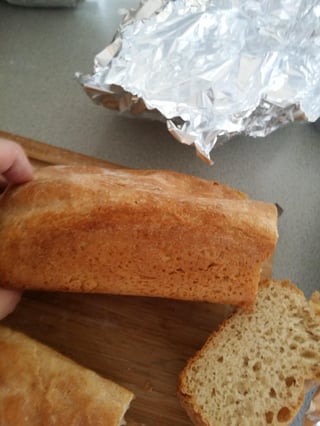I am trying to make a multigrain/white blended bread, I want to break away from using a breadmaker and manually mix it.
My recipe:
- 1 package (1/4 ounce - 1.5us tsp) active dry yeast (my previous attempts did not rise very much, suspected old yeast - new yeast was purchased, confirmed active)
- 2-1/4 cups warm water (110° to 115°) (water verified this temperature range with thermometer before mixing begins. any extra added is less than 15ml and also the same temp)
- 3 tablespoons sugar
- 2 tsp salt
- 2 tablespoons butter
- 6-1/4 to 6-3/4 cups flour (using 2 cups of multigrain bread flour, 4 cups all purpose white flour)
procedure:
Yeast is activated and dissolved in sugar water mixture before other ingredients are added. After adding, as per the above recipe I knead it for 10 minutes on a floured surface. Initial rising time is 30-45 mins or until doubled, dough is punched down and then shaped into loaves and divided into lightly greased breadpans. secondary rising time 30 mins or until doubled, placed into 350F oven for 30-40 mins or until lightly browned bread sounds 'hollow' when tapped.
Questions:
- What should the dough look/feel like when it's ready? (can anyone post me a picture of the targeted product?)
- What is overkneading?
- Is the recipe alright?
- Do you have additional steps to follow?
My background: I am a 260lb x-military veteran who regularly does 1000 pushups every 3 days, avg bench is 300lbs for several full sets, overhead press and pulls are roughly the same weights.
The point of me saying this - someone suggested I have kneaded the bread too much and too strongly.
Previous loaves were hard and did not rise very much.
Please offer this rookie some advice.








